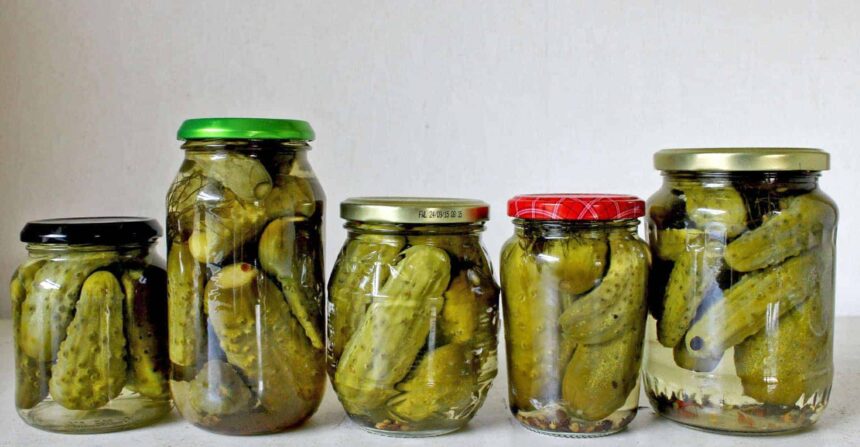Gherkins are the delightful little cucumbers that pack a punch of flavor in every bite. Often overlooked, these tiny treats can elevate your meals and snacks to new heights. Whether you’re a fan of tangy bites or just curious about this unique ingredient, gherkins have much more to offer than meets the eye. From their distinct taste to their health benefits, there’s plenty to explore about these crunchy wonders. Let’s dive into what makes gherkins so special and how they can add zest not only to your plate but also to your well-being!
What are Gherkins and How Are They Different from Pickles?
Gherkins are small, crunchy cucumbers that are typically pickled in vinegar, brine, or a sweet solution. Their petite size and distinctive flavor make them a popular addition to various dishes around the world.
While often confused with regular pickles, gherkins have unique characteristics. They are usually harvested when they’re about 2-4 inches long. This gives them their signature bite-sized form.
The term “pickle” is more generic. It can refer to any cucumber that has been preserved in this manner, regardless of size or preparation method. Gherkins are specifically made from certain varieties of cucumbers known for their crisp texture and tangy flavor profile.
Additionally, gherkins tend to be sweeter than many traditional dill pickles due to the sugar often added during the pickling process. This sweetness enhances their appeal as a snack or condiment.
Health Benefits of Gherkins
Gherkins pack a punch when it comes to health benefits. These tiny cucumbers are low in calories, making them an excellent choice for weight-conscious individuals.
They’re rich in vitamins and minerals, including vitamin K, which is vital for bone health and blood clotting. Gherkins also contain antioxidants that help combat free radicals in the body.
Additionally, their probiotic content promotes gut health. Fermented gherkins can support digestion and boost your immune system.
High water content keeps you hydrated while supplying essential nutrients without extra calories.
Furthermore, gherkins offer a satisfying crunch that can enhance various dishes without added fats or sugars.
Ways to Incorporate Gherkins into Your Diet
Gherkins are a versatile ingredient that can elevate many dishes. Try adding them to sandwiches for an unexpected crunch. Their tangy flavor pairs well with meats, enhancing any deli-style creation.
For salads, chop gherkins and mix them into your favorite recipe. They add zest to potato salad or coleslaw, making these classics even more delightful.
Consider using gherkins in dips. Blend them into cream cheese or yogurt-based dips for a refreshing twist at your next gathering.
You can also enjoy gherkins straight from the jar as a snack. They’re low in calories and packed with flavor, making them perfect for guilt-free munching.
Experiment by incorporating gherkin juice into dressings or marinades. Its acidity adds brightness to various recipes while complementing grilled meats beautifully.
Popular Dishes with Gherkins as an Ingredient
Gherkins add a delightful crunch and tang to various dishes. One classic option is the beloved potato salad. Chopped gherkins bring an unexpected zest that elevates this side dish.
Another favorite is the traditional Reuben sandwich. Layered with corned beef, Swiss cheese, and sauerkraut, adding gherkins creates a burst of flavor in every bite.
For those craving something lighter, consider a tartar sauce made from mayonnaise mixed with finely chopped gherkins and capers. This creamy accompaniment perfectly complements fried fish or seafood dishes.
Gherkin relish is also popular in burgers and hot dogs. The sweet-and-sour notes enhance the savory elements, making each bite memorable.
Don’t forget about charcuterie boards! Gherkins can be served alongside cheeses and cured meats for an appealing contrast of textures and flavors. They are versatile ingredients that truly shine across many culinary creations.
Potential Risks and Precautions When Consuming Gherkins
While gherkins are generally safe to eat, there are a few considerations to keep in mind.
First, their high sodium content can be concerning for individuals with hypertension or heart conditions. Consuming too many salty snacks may lead to increased blood pressure and fluid retention.
Additionally, some people might experience allergic reactions. Although rare, if you notice any unusual symptoms after eating gherkins, it’s wise to consult a healthcare professional.
For those watching their sugar intake, pay attention when choosing pickled varieties. Some brands add sugars that can increase calorie counts unexpectedly.
Ensure proper storage of homemade gherkins. Improperly canned or stored pickles may harbor bacteria like botulism which can pose serious health risks. Always check expiration dates on store-bought jars as well!
Conclusion
Gherkins offer a delightful crunch and a burst of flavor that can elevate many dishes. These small cucumbers not only bring taste but also pack numerous health benefits, making them an excellent addition to your diet. Whether you’re adding them to sandwiches, salads, or even enjoying them as a snack, gherkins are versatile and easy to incorporate into meals.
While they provide plenty of advantages, it’s good to be aware of potential risks associated with consuming too many pickled products. Moderation is key, especially for those watching their sodium intake.
Embrace the versatility of gherkins in your kitchen! With so many ways to enjoy them, you’ll find they’ll quickly become a staple ingredient in your culinary adventures. So go ahead—explore the world of gherkins and discover how they can enhance both flavor and nutrition in everyday meals.


